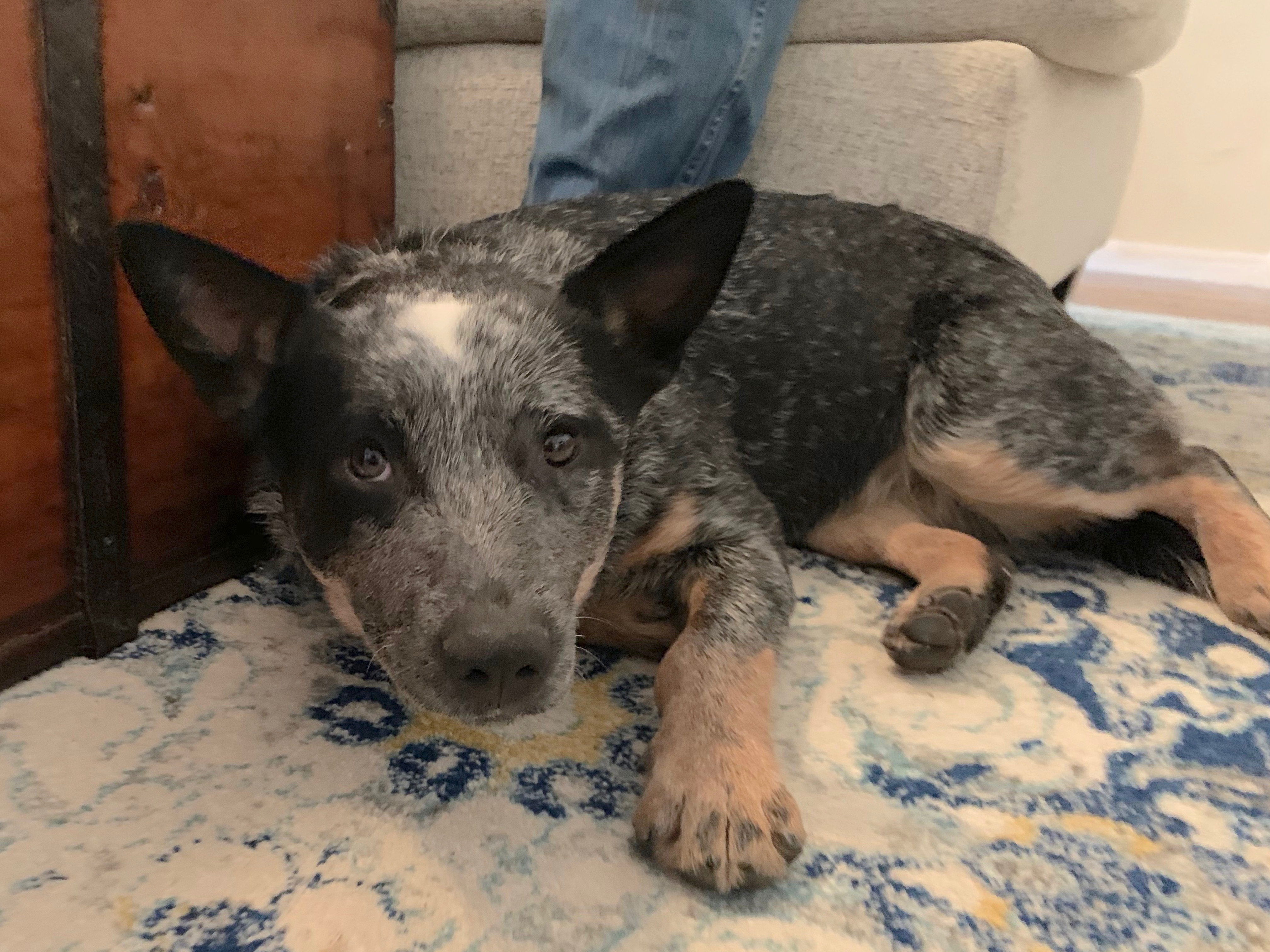Using Freeshaping to Help a Puppy Stop Acting Aggressive
By: David Codr
Published Date: January 15, 2019
For this Omaha dog training session we use freeshaping to teach 7 month old Blue Heeler Scout to look away instead of acting aggressive when she sees other dogs.
Scout enrolled in one of our puppy classes, but due to her dog aggressive behavior we felt an in home dog training session would be more effective. I started things off by discussing exercise as I find that most people don’t come close to providing enough exercise for most herding breeds.
But Scout is a lucky one. One of her guardians plans on using her to help herd cattle. I love it when people get dogs to help with work. Dogs love it too, especially herding breeds. Not only does it burn off all their energy, it has a profound impact on their self esteem. Blue Heeler trainers are often unnecessary as much of the herding behavior is instinctual.
Turning my focus to Scout’s aggressive behavior towards other dogs, I shared a number of tips that should help establish a healthy leader follower dynamic. This is crucial if you want a dog to respect and listen to you. Petting with a purpose, passive training, enforcing rules and teaching her new tricks and commands will all go a long ways towards helping with her dog aggression problem.
As a dog behavior expert, I find that many dogs with aggressive behavior problems get into trouble with their eyes. Dogs are scent creatures and its most comfortable for them to meet via scent. But when you have a reactive dog, that interaction is often avoided. So the dog starts seeing, then reacting to dogs; getting frustrated they don’t get to interact / get close enough to smell.
Some dogs are dog aggressive due to a lack of confidence, others due to genetics, late or insufficient socialization or a bad experience. But in most cases the reason the dog reacts is to make the other dog move away. By acting aggressive to other dogs, the aggressor dog is trying to increase distance between the two. Well there are two ways to increase distance; the other is to walk away on its own.
But many dogs are so fixated visually on the other dog its hard to get their attention. I pulled out my camera so I could show the guardian how to use freeshaping to teach the dog to look away when it sees another dog.
It will be important for the guardians to practice the look away command at home until Scout has it down pat. The next step is to practice outside where the distractions make it harder. But you don’t want to have any dogs around for this practice. The idea is to help the dog develop that skillset in the easiest situation possible at first, then progressively make it more challenging. You only want to start practicing the rest of my suggestions in the video when Scout can turn away on command while outside.
It will take some practice. But if the guardians go at the dog’s pace, they should help Scout learn to look away from dogs they don’t want to engage with. This is called a cut off signal and it can help eliminate dog aggression before it starts. At first from a distance, but then closer and closer.
Im hoping that the look away will stop Scout from acting aggressive to other dogs, but its going to take the guardians a few months of practice to know one way or the other. I told the guardians to let me know if this problem is still happening this spring. If it is, we may need to set up a follow up appointment to do some BAT training with another dog.
To help them remember all the dog training secrets I shared in this in home dog training session, we filmed a roadmap to success video that you can check out below.
Roadmap
Categorized in: Dog Behavior


